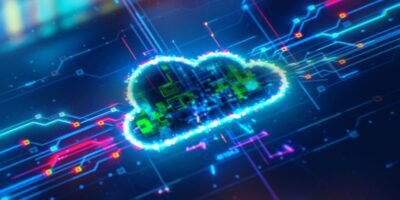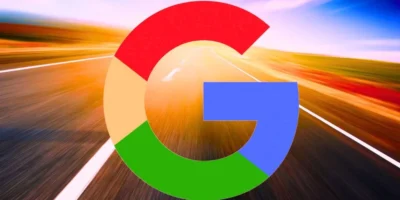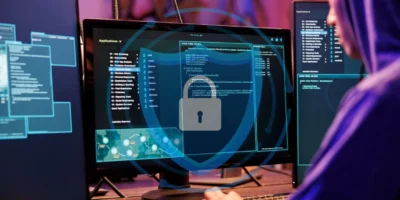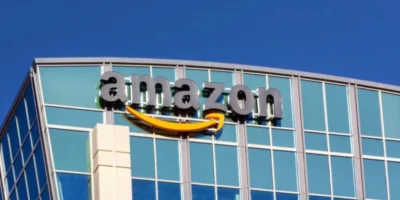In the hyper-competitive, digitally-driven crucible of the 21st-century global economy, the most consequential battles are no longer fought on the factory floor or in the physical marketplace. They are fought, won, and lost in the digital realm, in the intricate, interconnected, and increasingly intelligent systems that form the very nervous system of the modern corporation. This is the world of enterprise software, a multi-trillion-dollar landscape that has evolved from a collection of rigid, back-office accounting tools into the dynamic, strategic, and foundational platform upon which all modern business is built.
The enterprise software landscape of today is undergoing a period of transformation more profound than any in its history. The old, monolithic, on-premises behemoths that once defined the industry are being systematically dismantled and replaced by a new, far more powerful paradigm. This new world is a constellation of agile, cloud-native, and AI-infused applications, all seamlessly interconnected in a “composable” architecture designed for one purpose: to enable the speed, intelligence, and customer-centricity that are the absolute prerequisites for survival and growth in the digital age. For business leaders, navigating this complex and rapidly evolving landscape is no longer an IT decision; it is the central, defining act of corporate strategy. The choices made here—about which platforms to adopt, how to integrate them, and how to empower the workforce to use them—will determine the winners and losers of the next decade.
The Ghost of Enterprises Past: Deconstructing the Legacy Model and Its Failures
To appreciate the revolutionary nature of the modern enterprise software landscape, we must first journey back to the era that it is so decisively replacing. For decades, the world of enterprise has used a specific, now-obsolete model that dominated IT.
This legacy model, while powerful in its time, became a massive anchor of “technical debt,” a primary inhibitor of the very agility that modern businesses now desperately need.
The Reign of the On-Premise, Monolithic Behemoth
A handful of key characteristics defined the old world.
- Monolithic Architecture: Core business systems such as Enterprise Resource Planning (ERP) and Customer Relationship Management (CRM) were built as single, massive, tightly coupled applications. A single, sprawling codebase would contain all the functionality for every department, from finance and HR to manufacturing and sales.
- On-Premise Deployment: This software was not a service; it was a product that you bought and installed on your own physical servers, in your own private data centers. The customer was responsible for the immense cost and complexity of buying, managing, and maintaining all the underlying hardware, networking, and infrastructure.
- The “Waterfall” Implementation: Implementing one of these systems was a monumental, multi-year “big bang” project. It was a slow, rigid, and incredibly risky “waterfall” process that often cost tens or even hundreds of millions of dollars in software licenses and consulting fees.
- The “Walled Garden” Philosophy: These systems were designed as “walled gardens.” They were closed, proprietary, and notoriously difficult to integrate with other applications. Data was trapped in silos, and customization was brittle, expensive, and often ill-advised.
The Crippling Consequences of the Old Guard
As the pace of business accelerated and the digital revolution took hold, the limitations of this legacy model became painfully apparent.
These systems, which were once the engines of efficiency, had become the primary bottlenecks to progress.
- A Glacial Pace of Change: In a monolith, even a small change to a single business process required a full-scale, high-risk project to rebuild, retest, and redeploy the entire application. This made it impossible to respond quickly to new market opportunities or changing customer needs.
- The Stifling of Innovation: The upgrade cycle for on-premise software was brutally slow, with major new versions released only every few years. The upgrade process itself was so complex and risky that many companies chose to remain on old, unsupported versions, effectively cutting themselves off from the vendor’s latest innovations.
- A Horrific User Experience (UX): Legacy enterprise software was infamous for its clunky, unintuitive, and soul-crushing user interfaces. It was designed for a captive audience of “expert users” who had no choice but to endure extensive training to navigate its byzantine menus and screens. This led to low user adoption, high error rates, and a reliance on “shadow IT.”
- A Data Prison: The data siloed within these walled gardens was incredibly difficult to access and analyze promptly, making it impossible for business leaders to get a real-time, holistic view of their own operations.
The New Paradigm: The Architectural and Business Model Revolution
The modern enterprise software landscape is a direct and powerful rebellion against every one of the limitations of the past. It is built on a new set of architectural principles and a new business model that has completely redefined the relationship between the software vendor and the customer.
These are the core tenets that define the new, agile, and intelligent world of enterprise software.
The SaaS and Cloud-Native Foundation
The single most important and foundational shift has been the move from a product-based, on-premise model to a service-based, cloud-native one.
- Software as a Service (SaaS): This is the dominant business model of the modern era. Instead of buying a license, customers pay a recurring subscription fee to access the software online. The vendor takes on the massive burden of hosting, managing, securing, and updating the application. This transforms a massive, risky capital expenditure into a predictable operating expense and gives customers access to infrastructure and expertise they could never afford to build themselves.
- The Cloud-Native Architecture: Modern SaaS applications are not just old, monolithic applications that have been “lifted and shifted” to run on a cloud server. They are cloud-native, meaning they have been architected from the ground up to take full advantage of the cloud’s unique capabilities. This typically involves a microservices architecture, where the application is broken down into a collection of small, independent services packaged in containers and managed by an orchestrator such as Kubernetes. This architecture is what provides the immense scalability, resilience, and agility of a modern SaaS platform.
The Rise of the Composable, API-First Enterprise
The second major shift has been the death of the “one-size-fits-all” monolith and the rise of a more flexible, “best-of-breed” approach, a concept known as the composable enterprise.
- The “Best-of-Breed” Philosophy: Instead of buying a single, mediocre, do-it-all suite from one vendor, a modern enterprise can now select the absolute best SaaS application for each specific business function—the best CRM, the best HCM, the best expense management tool—and then “compose” them together into a unified system.
- The API-First Revolution: This composable vision is made possible by the API-first revolution. A modern SaaS application is designed from the ground up with a robust, well-documented, and secure Application Programming Interface (API). The API is not an afterthought; it is the product. This enables seamless, programmatic integration of different applications.
- The iPaaS Glue: An entirely new category of software, Integration Platform as a Service (iPaaS), has emerged as the “glue” for the composable enterprise. Platforms like MuleSoft, Boomi, and Workato provide a central hub for building, managing, and monitoring the complex web of API integrations across a company’s SaaS applications.
The Infusion of AI and Data-Driven Intelligence
The most powerful and transformative trend in the modern landscape is the deep and pervasive infusion of Artificial Intelligence (AI) into every category of enterprise software.
Modern enterprise applications are evolving from passive “systems of record” into proactive, intelligent “systems of engagement and insight.”
- From Reporting to Prediction: Instead of just showing you a report of what happened last quarter, an AI-infused application can analyze that historical data to make a highly accurate prediction about what will happen next quarter.
- The “Co-pilot” for Every Knowledge Worker: The latest wave of generative AI is being embedded in enterprise software as intelligent “co-pilots.” These AI assistants can understand natural language and can help users with a huge range of tasks, from drafting an email and summarizing a long document to generating a complex financial report from a simple prompt.
- Intelligent Process Automation: AI is moving beyond the simple, rules-based automation of RPA (Robotic Process Automation) into a new era of “intelligent automation,” capable of handling more complex, cognitive tasks involving unstructured data and decision-making.
The “Consumerization” of the Enterprise and the UX Mandate
The final core principle is a relentless and non-negotiable focus on the user experience (UX). The new generation of workers, who have grown up with the beautifully designed, intuitive apps of the consumer world, now expect and demand the same level of quality from their workplace tools.
- The Design-Led Enterprise: The most successful modern SaaS companies, from Slack to Figma to Canva, are design-led organizations. They understand that a simple, intuitive, and even joyful user experience is a powerful competitive advantage that drives user adoption, increases productivity, and reduces the need for costly training.
- The Low-Code/No-Code Empowerment: A key part of this trend is the rise of low-code/no-code (LCNC) platforms. These platforms provide a visual, drag-and-drop interface that empowers non-technical “citizen developers” in the business to build their own simple applications and automate their own workflows, without having to write a line of code. This democratizes the act of creation and dramatically increases business agility.
The Modern Enterprise Constellation: A Tour of the Key Software Categories
The modern enterprise software landscape is a vast and dynamic constellation of interconnected systems. While the old, monolithic categories still exist, they have been reinvented in light of the new principles of cloud, AI, and composability.
Let’s explore the key “galaxies” within this new enterprise constellation.
The “System of Record” Galaxies: The Digital Core
These are the foundational, mission-critical systems that manage the business’s core entities and processes. They are the ultimate “source of truth” for the enterprise’s most important data.
- Enterprise Resource Planning (ERP):
- The Core Function: ERP is the traditional “digital core,” managing the company’s financials (general ledger, accounts payable/receivable), manufacturing processes, and core supply chain operations.
- The Modern Landscape: On-premises ERP giants SAP and Oracle are in the midst of a massive, complex transition to the cloud. They are being challenged by cloud-native players such as Workday (which has expanded from HCM into finance) and NetSuite (owned by Oracle but a cloud-native platform focused on the mid-market). The modern “intelligent ERP” is infused with AI to automate financial closing processes, provide real-time supply chain visibility, and offer predictive financial forecasting.
- Human Capital Management (HCM):
- The Core Function: HCM manages the entire employee lifecycle —from “hire to retire”—including recruiting, onboarding, payroll, benefits, performance management, and learning.
- The Modern Landscape: This category has been completely transformed by cloud-native disruptors like Workday and SuccessFactors (owned by SAP). The focus has shifted from a back-office, administrative function to a strategic focus on the employee experience. Modern HCM platforms empower employees with self-service tools and provide managers with data and analytics to make better talent decisions.
- Customer Relationship Management (CRM):
- The Core Function: CRM is the system of record for all customer data and interactions. It is the heart of the sales, marketing, and customer service functions.
- The Modern Landscape: This market is dominated by the original SaaS behemoth, Salesforce. The modern CRM is a “Customer 360” platform that provides a unified, real-time view of the customer across every touchpoint. It is heavily powered by AI (like Salesforce’s Einstein) to provide predictive lead scoring for sales, to personalize marketing campaigns at scale, and to power intelligent chatbots for customer service.
The “System of Engagement” Galaxies: The Collaboration and Productivity Layer
These are the tools knowledge workers use every day. They are the “front-end” of the digital workplace, the platforms for communication, collaboration, and creation.
- The Digital Workplace Hub:
- The Core Function: These platforms provide the central hub for team communication, file sharing, and project collaboration.
- The Modern Landscape: This space has been revolutionized by messaging-centric platforms like Slack (now owned by Salesforce) and Microsoft Teams. These are no longer chat apps; they are extensible platforms that integrate with hundreds of other enterprise applications, acting as a central “command center” for work.
- The Productivity and Content Creation Suites:
- The Core Function: This includes the traditional tools for creating documents, spreadsheets, and presentations.
- The Modern Landscape: The market is a duopoly of Microsoft 365 and Google Workspace. The major innovation here is the deep integration of cloud collaboration (allowing multiple users to co-edit a document in real-time) and the infusion of generative AI “co-pilots” that are fundamentally changing the nature of content creation.
- The New Wave of Visual and Specialized Collaboration:
- The Core Function: A new generation of tools has emerged to support more visual and specialized forms of collaboration.
- The Modern Landscape: Tools like Miro and Mural have become the indispensable “digital whiteboards” for remote brainstorming and workshops. Figma has revolutionized product design with its collaborative, browser-based interface. Notion has created a new category of a flexible, “all-in-one” workspace for notes, docs, and project management.
The “System of Intelligence” Galaxies: The Data and Analytics Layer
This layer turns the vast amounts of data generated by the other systems into actionable business intelligence.
- The Modern Data Stack:
- The Core Function: This is the infrastructure for collecting, storing, transforming, and analyzing the enterprise’s data.
- The Modern Landscape: The old, on-premise data warehouse has been replaced by a more flexible, cloud-native “modern data stack.” This includes cloud data warehouses such as Snowflake and Google BigQuery, data ingestion tools such as Fivetran, data transformation tools such as dbt, and data visualization tools.
- Business Intelligence (BI) and Data Visualization:
- The Core Function: BI tools provide the dashboards, reports, and visualizations that allow business users to explore and understand their data.
- The Modern Landscape: The market has shifted from complex, IT-driven reporting to more self-service, user-friendly platforms such as Tableau (owned by Salesforce) and Microsoft Power BI. The latest trend is the infusion of natural language querying (NLQ), which allows a user to ask questions of their data in plain English.
- The AI and Machine Learning Platform:
- The Core Function: These are the platforms that data scientists and machine learning engineers use to build, train, and deploy custom AI models.
- The Modern Landscape: The major cloud providers (AWS SageMaker, Azure Machine Learning, Google Vertex AI) offer comprehensive, end-to-end ML platforms. There is also a vibrant ecosystem of specialized MLOps (Machine Learning Operations) platforms, such as DataRobot and H2O.ai.
The Strategic Playbook: How to Navigate and Win in the Modern Enterprise Software Landscape
For any business leader, the sheer number of options and the rapid pace of change in the enterprise software world can be overwhelming. A successful journey requires a clear and disciplined strategic playbook.
This is not a technology decision; it is a fundamental business transformation.
The Strategy: Start with the Business, Not the Software
The most common and catastrophic mistake is to start the journey with a “shopping list” of technologies.
- The “Capability-First” Approach: The journey must begin with a clear-eyed assessment of the core business capabilities that the company needs to build to achieve its strategic goals. Do you need the capability to deliver a hyper-personalized customer experience? Do you need the capability to launch new products in half the time? The answers to these business questions will then dictate the software choices, not the other way around.
- Think “Customer Journey,” Not “Departmental Silo”: A successful strategy is designed from the “outside-in,” starting with the ideal customer journey. This forces a cross-functional perspective and helps break down the departmental silos often reinforced by legacy software.
The Architecture: Embrace Composability, But Govern the Core
The “composable enterprise” is a powerful vision, but it can also lead to chaos if not properly managed.
- The “Pace-Layered” Application Strategy: A useful model is to think of your application portfolio in “pace layers.”
- Systems of Record: These are the foundational, slow-moving systems, such as your ERP. Here, the priority is stability, security, and data integrity. Standardization on a single, core platform is often the best approach.
- Systems of Differentiation: These are the applications that support your unique, proprietary business processes that are a source of competitive advantage. Here, you may choose to build a custom application or heavily configure a best-of-breed platform.
- Systems of Innovation: These are the fast-moving, experimental applications that are used to test new ideas and business models. Here, speed and agility are the top priority, and the use of low-code platforms and rapid prototyping is common.
- The Central Role of the Integration Strategy: In a composable world, your integration strategy is your architecture strategy. A significant investment in a modern iPaaS platform and a strong central governance model for your APIs is non-negotiable.
The Implementation: Agile, Iterative, and Human-Centric
The days of the multi-year, “big bang” implementation project are over.
- Start Small, Scale Fast: The modern approach is to start with a “lighthouse” project—a high-impact, manageable-scope project that can deliver tangible value in a few months. The learnings from this pilot can then be used to create a “playbook” to scale the transformation across the rest of the organization.
- The Centrality of Change Management: The success of any new enterprise software is 100% dependent on user adoption. A formal, well-resourced change management program is not a “nice-to-have”; it is the most critical success factor. This involves constant communication, building a network of “change champions,” and a deep investment in user training and support.
The Governance: The Journey is Never Over
In the SaaS world, “go-live” is not the end of the project; it is the beginning of a continuous journey of optimization.
- The Center of Excellence (CoE): For each major enterprise platform, it is a best practice to create a CoE. This is a dedicated, cross-functional team responsible for the ongoing governance, enhancement, and optimization of the platform, ensuring the business derives the maximum possible value from its subscription investment.
- A Culture of Continuous Improvement: The enterprise software stack should be viewed as a living, dynamic system in constant evolution, with a tight feedback loop between business users and the CoE to identify and implement new improvements continuously.
The Future of the Enterprise: An Autonomous, Sentient, and Composable Organism
The trajectory of enterprise software is clear. The trends of today point to a future in which the enterprise itself begins to function less like a rigid, hierarchical machine and more like a sentient, adaptive, and intelligent biological organism.
The Rise of the “Autonomous Enterprise”
The “AI co-pilot” of today is the precursor to the “autonomous agent” of tomorrow. The future of enterprise software is one in which a significant number of routine operational decisions and workflows will be handled autonomously by AI, with humans taking on a role of strategic oversight, creative problem-solving, and “on-exception” management.
The Hyper-Personalization of the Employee Experience
Just as the customer experience has become hyper-personalized, the employee experience will follow suit. The enterprise software of the future will be a dynamic, intelligent agent tailored to each employee. It will understand their role, skills, work patterns, and career aspirations, and proactively surface the information, tasks, and learning opportunities most relevant to them.
The True Composable Enterprise: The Business as an API
The ultimate vision of the composable enterprise is a business that is itself a collection of “packaged business capabilities”—modular, API-driven services that can be rapidly discovered, combined, and reconfigured to create new products, services, and business models. In this world, the distinction between “the business” and “the software” will effectively disappear.
Conclusion
The enterprise software landscape has been irrevocably transformed. The rigid, siloed, and frustrating systems of the past have given way to a new, far more powerful paradigm—an intelligent, interconnected, and human-centric constellation of cloud-native applications that is the true operating system for the modern digital enterprise. This new digital spine is not just supporting the business; it is actively shaping its strategy, defining its capabilities, and driving its competitive advantage.
Navigating this new landscape is the central challenge and the greatest opportunity for business leaders today. It requires a new way of thinking, a shift from a technology-centric to a business-capability-centric mindset. It demands a deep investment not just in the software itself, but also in the integration architecture, the data foundation, and, most importantly, the cultural and human transformation that must accompany it. The companies that master this new world, that can successfully weave together the best of this new software generation into a seamless, intelligent, and adaptive whole, will be the ones that are not just prepared for the future but are actively inventing it.













